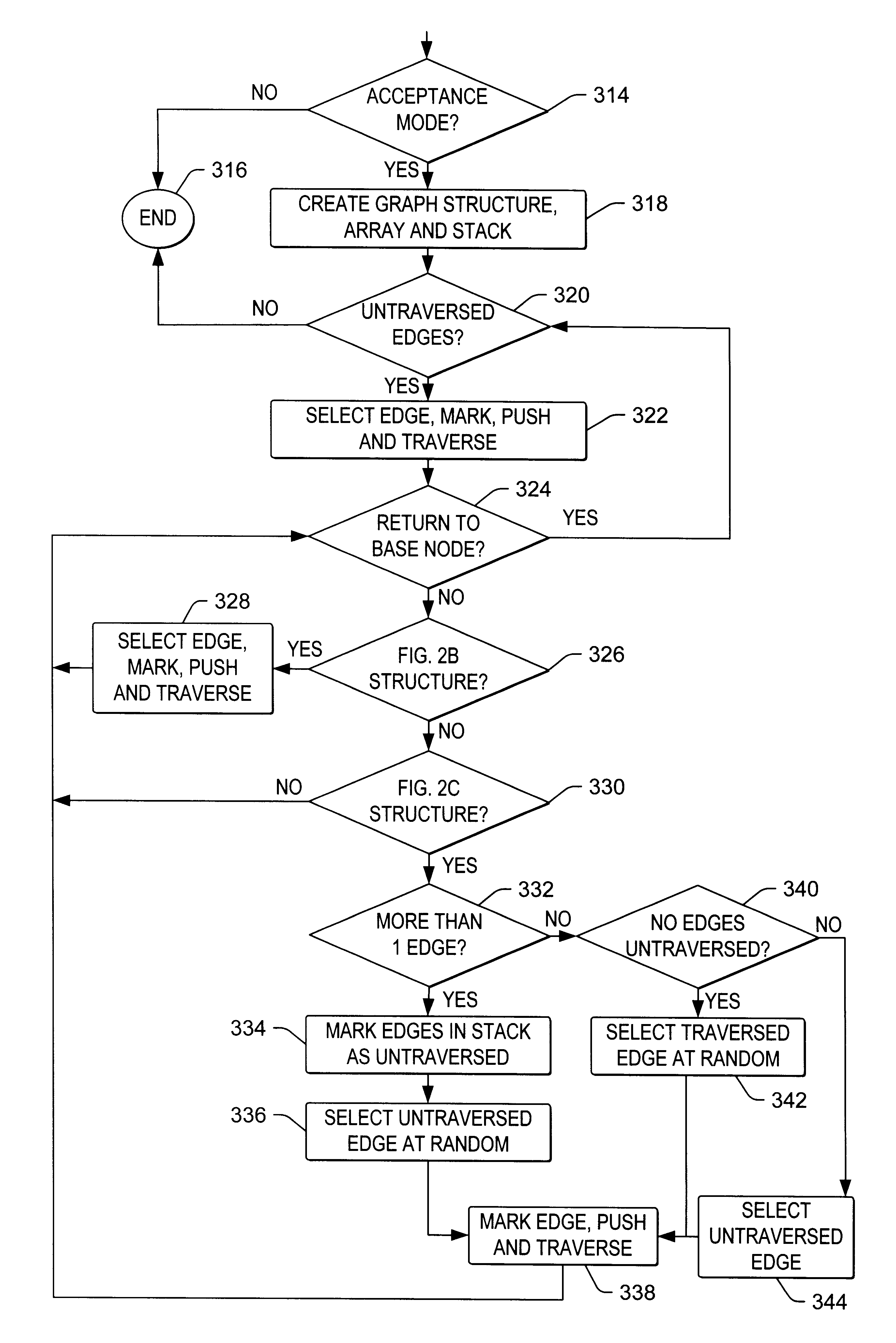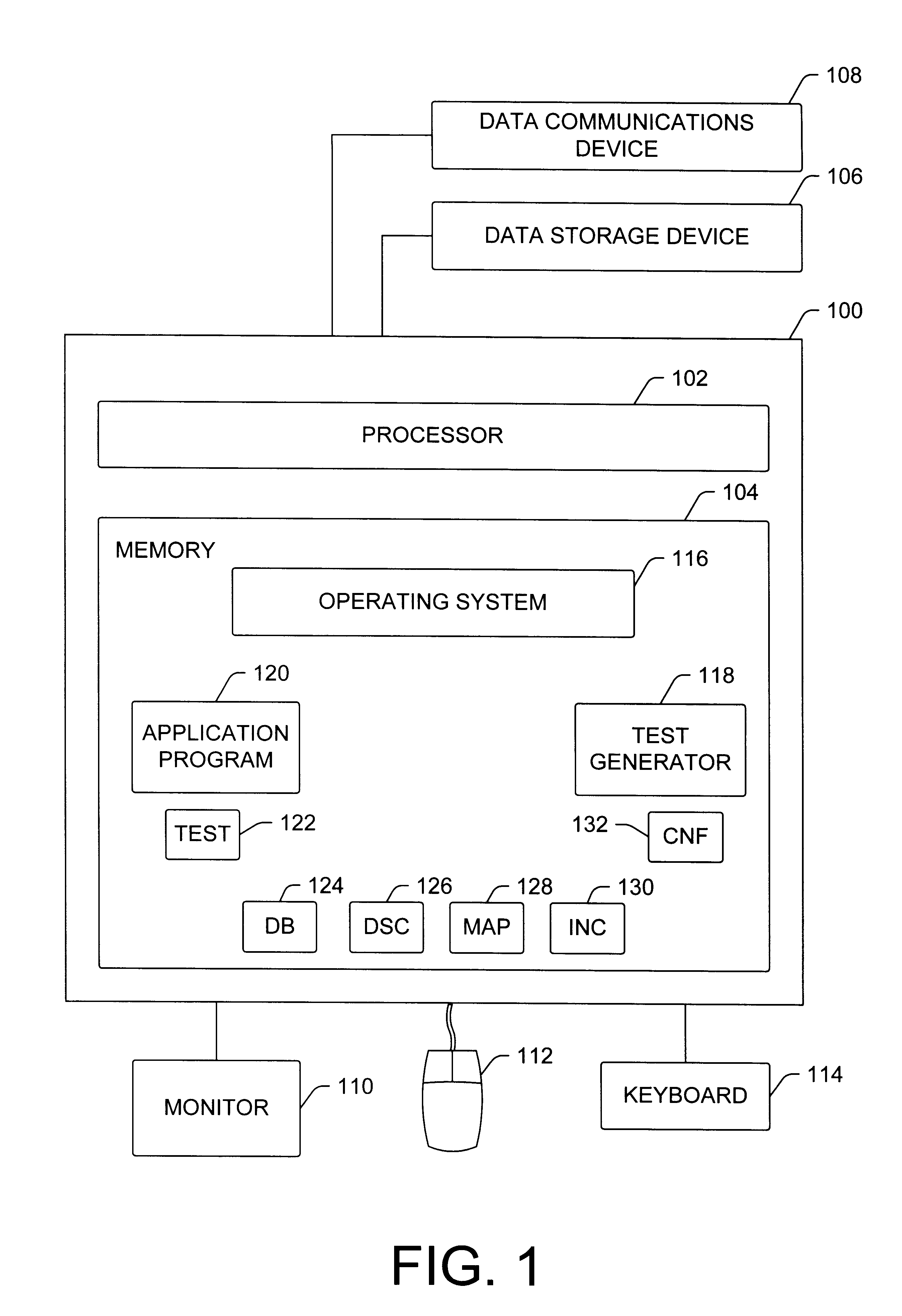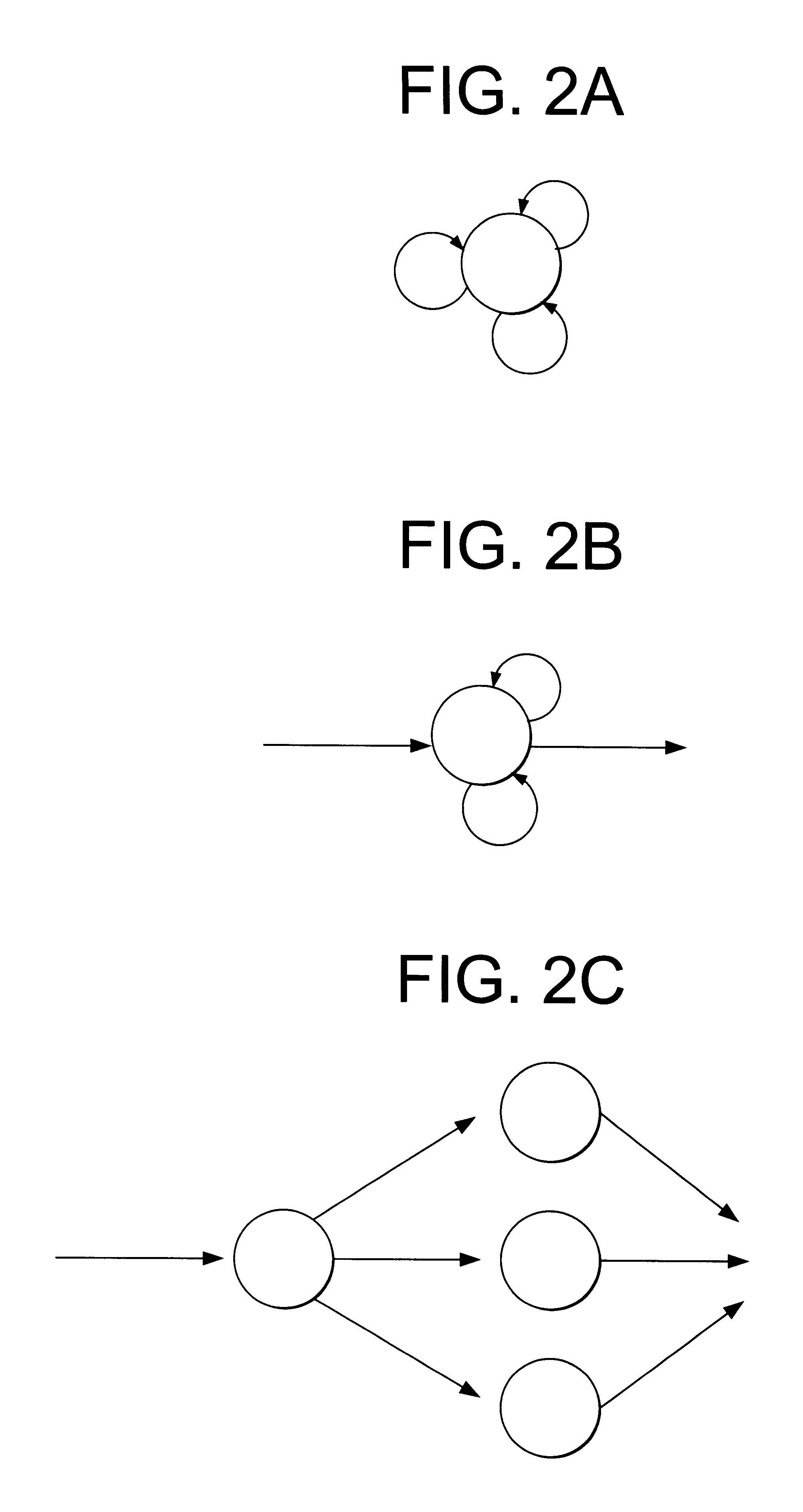Complete, randomly ordered traversal of cyclic directed graphs
- Summary
- Abstract
- Description
- Claims
- Application Information
AI Technical Summary
Problems solved by technology
Method used
Image
Examples
Embodiment Construction
The following provides an example of how description files 126 are created for the test generator 118. This example illustrates the creation of a simple description of the portions of the circle command in Autodesk's AutoCAD.TM. using the 4Test.TM. language employed by Segue's QA Partner.TM. as the underlying scripting language.
As described above, the first step is to add a line to the map file 128, so that the test generator 118 can find the new feature description. The line added might look like the following:
The next step is to create the description file 126 using a text editor (description files 126 are plain-text files). The filename for the description file 126 must match the one entered in the map file 128, which in this example is "circle.dsc" as indicated above.
At minimum, the description file 126 has to contain the following lines:
DESCRIBE Circle
{
}
The DESCRIBE keyword indicates the beginning of the feature description. Following the DESCRIBE is the feature name, which mus...
PUM
 Login to View More
Login to View More Abstract
Description
Claims
Application Information
 Login to View More
Login to View More - R&D Engineer
- R&D Manager
- IP Professional
- Industry Leading Data Capabilities
- Powerful AI technology
- Patent DNA Extraction
Browse by: Latest US Patents, China's latest patents, Technical Efficacy Thesaurus, Application Domain, Technology Topic, Popular Technical Reports.
© 2024 PatSnap. All rights reserved.Legal|Privacy policy|Modern Slavery Act Transparency Statement|Sitemap|About US| Contact US: help@patsnap.com










